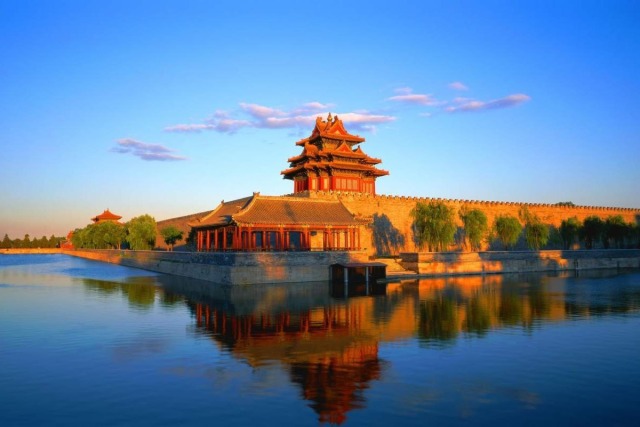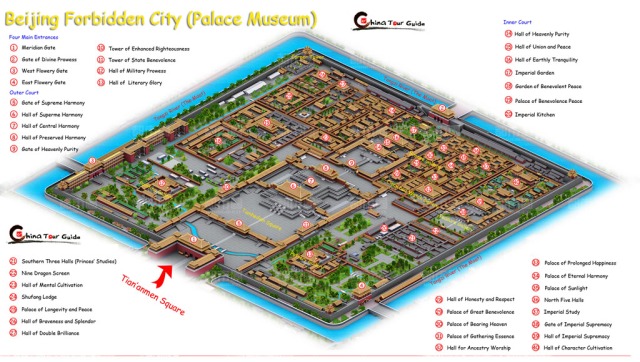
A 164-foot wide mote and 33-foot high wall with a perimeter of roughly 2.25 miles encases The Forbidden City in the center of Beijing. It features about 800 buildings and almost 10,000 rooms, over a 7-million square feet area, and houses a myriad of national treasures that provide a glimpse of the development of Chinese culture for more than 500 years.
Emperor Zhu Di of the Ming Dynasty ordered the construction of the complex to serve as the Imperial Palace. He was the first of 24 emperors (14 Ming and 10 Qing) who called The Forbidden City, “home.” The original structure took 14 years to build (1406-1420), 200,000 workers and artisans to complete, and features a symmetrical layout, typical of Chinese urban planning of the times. There is a central axis, with residences, courtyards, gardens, public and religious buildings placed in a hierarchical manner. Although stone and brick make up the foundation of the city’s buildings, the structures were meticulously built out of wood.

Preserved written and art works, attest to court culture and prevailing law of the Ming and Qing dynasties.
The Forbidden City opened to the public as the Palace Museum or the Old Palace in 1925 after the collapse of the Qing Dynasty. Protecting the integrity of the buildings and its contents has remained a priority for the last century. In 1987, UNESCO declared The Forbidden City a ‘World Heritage Site’, for its collection of preserved ancient wood-based structures and priceless relics.
The Imperial Palace is visited each year by more than 10-million people. However, some of the areas are currently under renovation in anticipation of the 600th anniversary of the palace, which will take place in 2020.
Yu’s New Beijing in Glen Ellyn, IL is happy to share Chinese traditions and history with you. Our restaurant is open 7 days a week for dining in, pick up, or delivery. Visit our website or call us at 630-439-1535 to place your orders.
